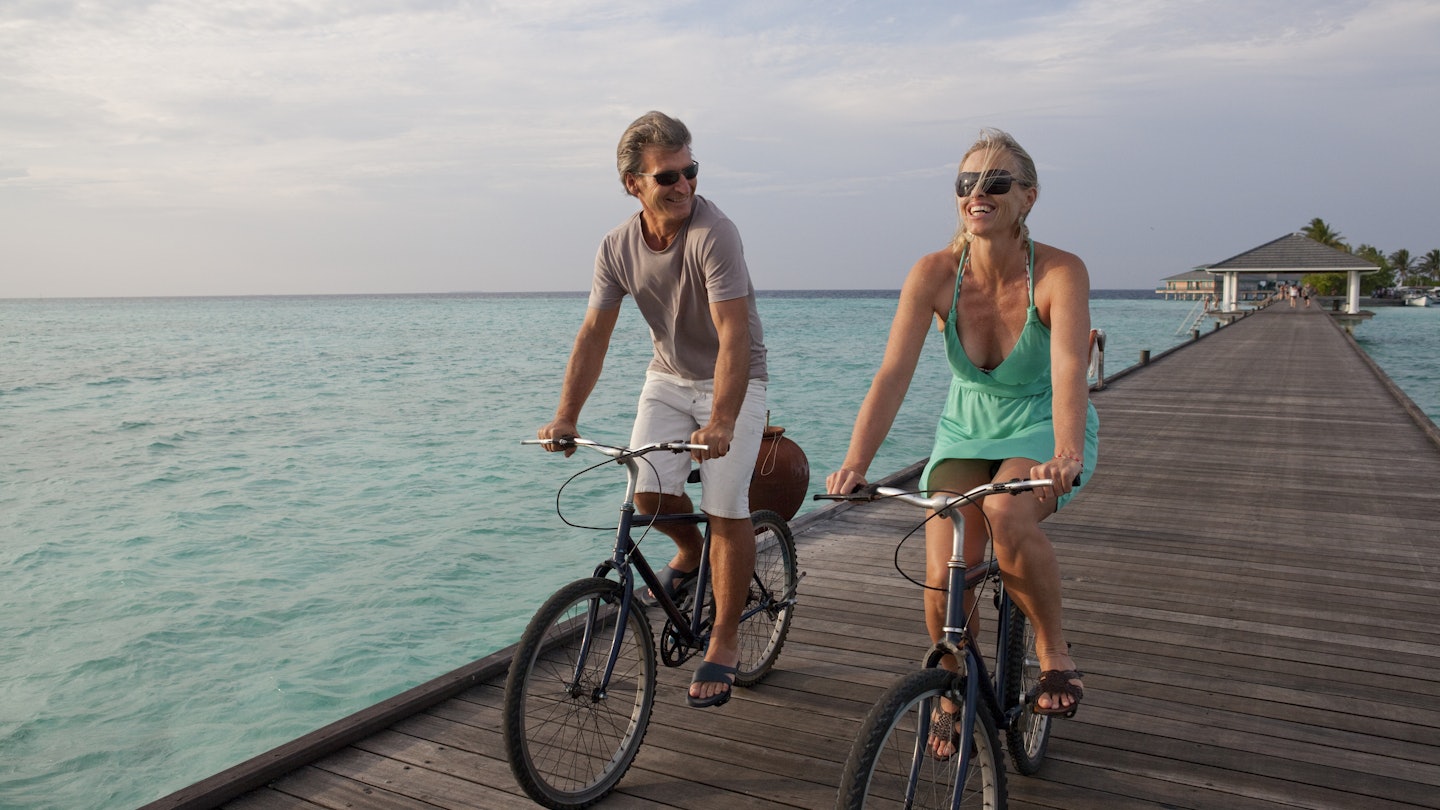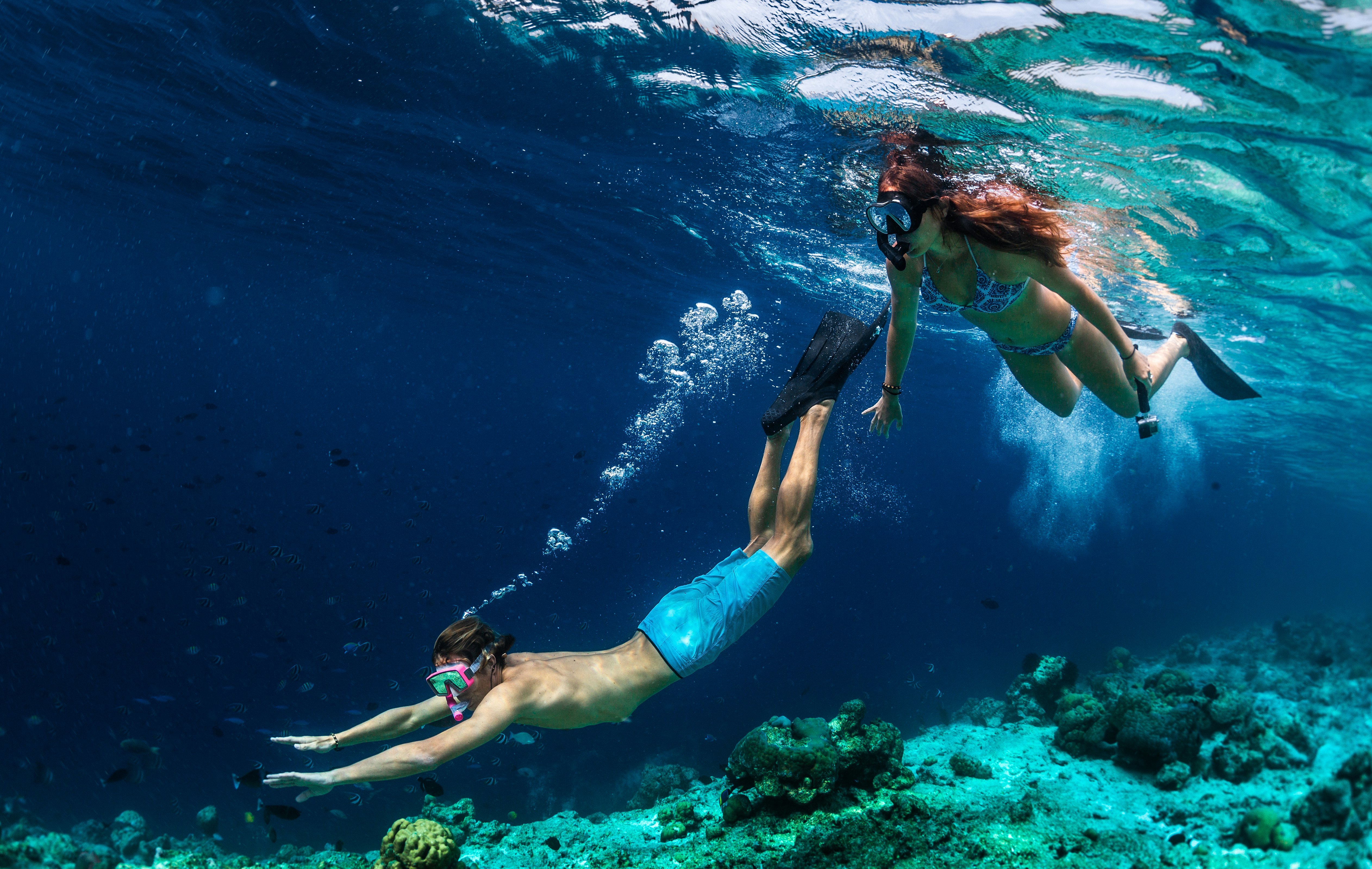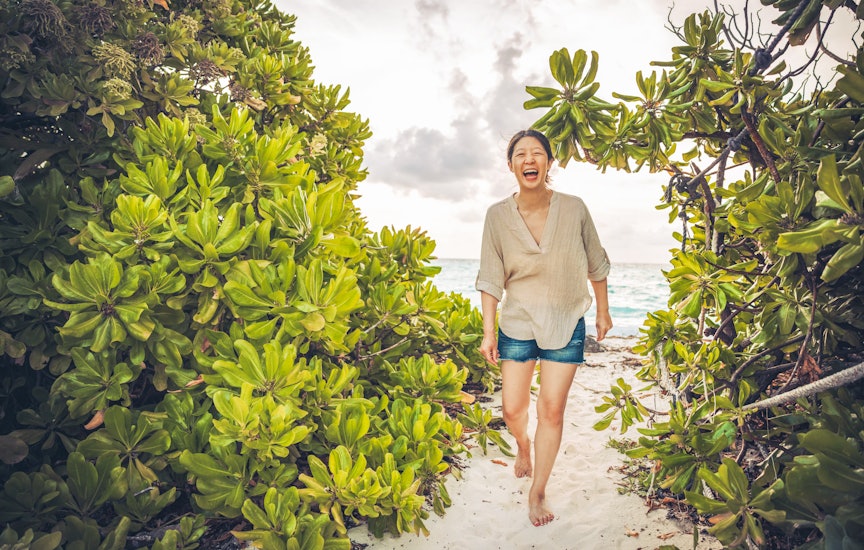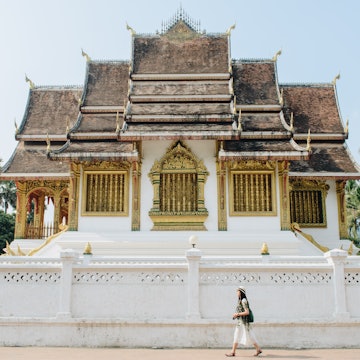

Be ready for your visit to the Maldives with this guide to planning and etiquette. Getty Images
Paradise personified. Heaven on earth. Screensaver goals. The Maldives has earned a lot of monikers since it opened to tourists in the 1970s.
Over the past 50 years, it’s become known as a honeymoon hot spot, a family-friendly getaway and one of the world’s most coveted vacation destinations.
And while it may seem like a lot of hype for one small, spread-out island nation in the Indian Ocean, the Maldives really does live up to it. From coconut-fringed islands and colorful reefs to warm smiles and even warmer curries, it’s often a once-in-a-lifetime getaway for travelers. Whether you’re heading off to a ritzy private island resort or a more affordable local island, there’s a handful of things to know before departure. Here are our top tips and best advice ahead of a trip to the Maldives.
1. Plan for at least 5 nights in the Maldives
For all travelers, it takes a plane ride or three to land in this far-flung slice of paradise. So, while a weekend to the Maldives may work for travelers based in Asia, five nights will suffice if you’re crunched for time and budget. And if neither is an issue, plan for at least a week to fully unwind and embrace island life.

2. You can get around via seaplane or speedboat
When choosing your island resort, pay attention to whether it’s reachable by seaplane or speedboat. Although seaplane transfers give picture-worthy views of the pearl-shaped atolls, they often cost much more. And be aware there’s a 25kg (55lbs) total luggage per person allowance on seaplanes. So, if you’re looking to save money, pick a resort closer to Male that you can transfer to via speedboat. You can also take a domestic flight to another atoll in the Maldives and a speedboat to the resort.
3. Island-hopping is doable (and encouraged)
Many travelers spend weeks poring over which private island resort is the best for them, but you don’t have to choose one. Beach bums can split their time between resorts. You’ll need to travel back to Male airport, where a representative from your next resort will meet you and transfer you there via seaplane or speedboat. If the resorts are close together, you can charter a speedboat from one resort to another.
4. Aim to land in Male in the morning
If you’re staying at a resort accessible by seaplane transfer, arriving in the morning is crucial. Once the sun sets, seaplanes stop flying, so you’d need to stay overnight in Male or Hulhumale to wait for the next seaplane. If your resort is accessible via a speedboat or water taxi, arriving at night is less of an issue, but the Maldives scenery is so stunning you’ll want to be able to see it.

5. Understand “island time”
These tiny private islands operate by their own rules, including their own time zones. Some resorts will ask guests to set their clocks to “island time,” an hour forward to give them an extra hour of sunlight for snorkeling or swimming.
6. Stock up well (there are no grocery stores for tourists)
There are no grocery stores or Walmarts on these tiny private islands. So, triple-check that you’ve got everything you need, including reef-safe sunscreen to help protect one of the Maldives’ most precious natural habitats. Every resort has a boutique store where you can pick up necessities you may have forgotten, but prices are often insanely expensive.
7. Familiarize yourself with the prohibited items list
The Maldives is a devout Muslim country with strict rules. So travelers entering cannot bring alcohol, pornographic materials, pork products or idols of worship among other things. If anything prohibited is found, it will be taken away on arrival.
8. Local islands are a bargain but come with caveats
The local islands are a great and safe option for travelers on a budget and those not willing to shell out thousands for an island getaway. Small Maldivian-run guesthouses offer a much more intimate look at daily life, but there are a few things to know first. Alcohol is illegal on local islands, so don’t expect to enjoy a beer by the beach. Travelers must also dress conservatively on local islands by covering their shoulders and knees. Women don’t need to cover their heads, but wearing a bathing suit outside of designated “bikini beaches” is not allowed and could land you with a fine.

9. There’s no standard tipping etiquette
Tipping on top of your restaurant bill at the resort is not expected because a 10% tip is already included. However, if you want to leave something for your favorite server at the end of your stay that is more than OK. Guests can also write a review calling out their favorite team members; management often rewards staff for stellar service. Leaving a tip ranging from US$2 to US$10 per day for housekeeping is also customary. And if you have a butler, tipping 10% of the cost of your stay is a fine rule of thumb.
10. You can pay in USD
The local currency is the Maldivian rufiya, but US dollars are also accepted. You can get some local currency from the ATM at the airport on arrival. If you want to exchange money for rufiya, you can do so in the airport at the Bank of Maldives Foreign Exchange. Keep your receipt with you so you can change anything extra back into your local currency when you leave.

11. The Maldives is great for families
The Maldives offers a unique and enriching experience for families of all ages. Children can explore colorful coral reefs through snorkeling or diving excursions. Family-friendly resorts in the Maldives provide a range of activities and amenities, from kids' clubs and water sports to beachfront dining options that cater to all tastes. The Maldives provides a safe and welcoming environment for families to create lasting memories together, making it a top choice for a memorable and enjoyable vacation with loved ones.
We recommend: Adaaran Select Hudhuranfushi
Adaaran Select Hudhuranfushi is a good choice for a family holiday where activities are laid on in bucket loads. The large resort is set on an almond-shaped island fringed by gorgeous white-sand beaches and centered on a huge reception area surrounded by restaurants, bars and a great pool. Daily entertainment is another bonus.
12. Resort doctors can help with health concerns
The vast majority of travelers will go straight from the plane to a private island resort. Should you have any health issues during your stay, the on-island doctor will be able to assist you.
13. There is a “green tax” for tourists
Every tourist is charged a government tax to stay in a hotel, liveaboard or guesthouse. The tax is US$6 per day unless you’re staying in a guesthouse on a local island with 50 or fewer registered rooms, then the tax is US$3 per day. The charge will be included in your overall bill.
14. Sustainability initiatives are everywhere
As the world’s lowest-lying country, the Maldives is under serious threat from climate change. Nearly every resort has sustainability initiatives, which might include coral regeneration, onsite gardens, turtle rehabilitation and/or unique mosquito trapping methods instead of chemical spraying. A few of the more sustainable resorts to choose from are Soneva, Six Senses, Four Seasons, Kudadoo and Gili Lankanfushi. Beware of greenwashing, where organizations claim sustainability credentials that aren't as impactful as they suggest.
















